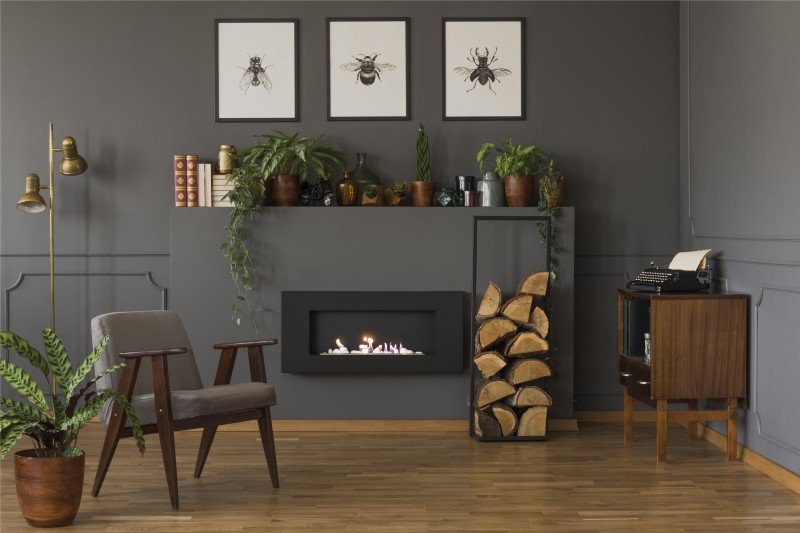Fireplaces in the UK: A Comprehensive Guide
Fireplaces have actually long been an important part of British homes, offering both aesthetic appeal and practical heat. As the weather turns chilly, the attraction of a cozy fire beckons, transforming any living area into a sanctuary. In this post, we will explore the numerous kinds of fireplaces offered in the UK, factors to consider for setup, upkeep tips, and answers to frequently asked questions about fireplaces.
Kinds of Fireplaces
When picking a fireplace for a UK home, several alternatives are offered, each with unique functions and advantages. The following table sums up the main types of fireplaces popular in the UK:
| Fireplace Type | Description | Pros | Cons |
|---|---|---|---|
| Open Hearth | Traditional fireplaces that burn wood or coal, supplying a rustic feel. | Genuine atmosphere; excellent heat distribution | Less energy-efficient; requires chimney maintenance |
| Gas Fireplaces | Usage natural gas or lp; can be direct vent or ventless. | Immediate heat; simple to run; cleaner burning | Preliminary setup expense; might need gas line |
| Electric Fireplaces | Replicate a flame using LED lights and offer heat through electrical energy. | Safe; simple to install; no flue required | Less genuine; greater operating expense |
| Wood-burning Stoves | Closed-system fireplaces that burn logs, providing high efficiency. | High heat output; eco-friendly when using sustainable wood | Limited visual compared to open hearth |
| Bioethanol Fireplaces | Eco-friendly option that burns bioethanol, developing real flames. | No chimney required; versatile design choices | Can be pricey to run; minimal heat output |
Advantages and disadvantages of Each Type
Open Hearth
- Pros:
- Provides character to any living space.
- Effective heat circulation due to open flames.
- Cons:
- Less energy-efficient and more smoke than modern alternatives.
- Requires routine cleansing and maintenance of the chimney.
Gas Fireplaces
- Pros:
- Easy to manage and run with the flick of a switch.
- Cleaner alternative with less soot accumulation.
- Cons:
- Requires a gas supply and setup expenses can be high.
- Might not supply the exact same atmosphere as a traditional fire.
Electric Fireplaces
- Pros:
- Simple installation with no chimney or flue needed.
- Can be found in numerous styles, resembling traditional options.
- Cons:
- Lacks the realism of real flames and can end up being costly with continuous use.
Wood-burning Stoves
- Pros:
- Highly efficient and creates significant heat.
- Eco-friendly resource when using responsibly sourced wood.
- Cons:
- Requires extra area for log storage and routine maintenance.
Bioethanol Fireplaces
- Pros:
- Flexible placement due to no requirement for traditional venting.
- Clean-burning and very little influence on indoor air quality.
- Cons:
- Can be less cost-effective for consistent use compared to gas or wood.
- Heat output is less effective for larger areas.
Setup Considerations
When setting up a fireplace in a UK home, several elements should be taken into account:
- Building Regulations: Ensure compliance with local building regulations and safety guidelines.
- Chimney and Flue: Determine the requirement for a chimney or flue system based on the type of fireplace picked.
- Ventilation: Proper ventilation is essential for security, specifically with gas, wood, and bioethanol alternatives.
- Location: Consider the very best place for the fireplace to make the most of heat distribution and visual appeal.
- Expert Help: Engaging an expert installer can ensure a safe and precise setup customized to the specific type of fireplace.
Upkeep Tips
Routine maintenance of a fireplace is vital for both security and efficiency. Follow these standards to keep your fireplace in peak condition:
- Chimney Sweeping: Have your chimney expertly swept at least once a year to prevent obstructions and reduce fire threat.
- Examine for Damage: Regularly look for leakages, cracks, or damage, especially in gas and wood-burning fireplaces.
- Tidy the Surroundings: Ensure the area around the fireplace is devoid of dust and flammable products.
- Examine Carbon Monoxide Detectors: Test detectors routinely, particularly in homes with gas-burning appliances.
- Shop Wood Properly: If utilizing a wood-burning range, store wood in a dry location to reduce moisture material.
Often Asked Questions
What is the very best kind of fireplace for a small space?
For small areas, electric fireplaces or bioethanol designs are often advised due to their smaller size, safety functions, and visual appeals.
Are electric fireplaces less expensive to run than gas?
Electric fireplaces normally have a lower upfront expense, but depending upon electrical energy rates, they can be more expensive to operate long term compared to gas.
Do wood-burning stoves need a lot of upkeep?
While they do need some upkeep, such as cleansing and regular chimney sweeps, numerous house owners find that modern wood-burning stoves are efficient and fairly low maintenance compared to traditional open hearths.
Can I set up a gas fireplace myself?
While some homeowners might try DIY setup, it is highly recommended to employ an expert for gas fireplace setups due to safety concerns and regulatory compliance.
How can I make the most of the heat output of my fireplace?
To make the most of heat output from any fireplace, consider the following:
- Keep doors and windows closed during usage.
- Usage heat-efficient logs or fuels.
- Guarantee proper airflow around the fire.
- Utilize fans or blowers that can circulate warm air throughout the room.
Fireplaces stay a valued element within UK homes, providing warmth, appeal, and an inviting environment. Offered the range of options and their distinct functions, property owners can choose the ideal fireplace to complement their living space while making sure security and effectiveness. With hop over to this web-site and a clear understanding of the installation requirements, anyone can enjoy the beauty and comfort of a fireplace for years to come.

